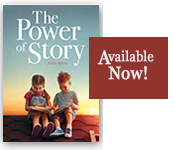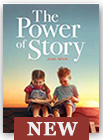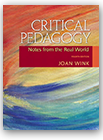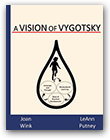|
|
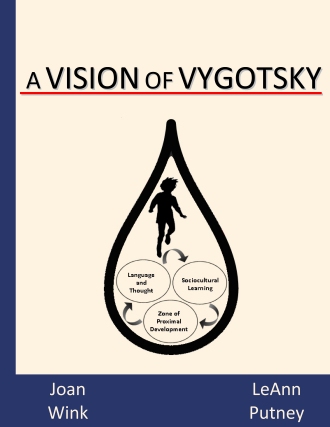 |
Table of Contents
| Preface | xi | |
| The Vygotskian Metaphor: Water | xi | |
| Dialectics | xii | |
| The Overriding Theme | xiii | |
| Visually Vygotsky: A Road Map for Readers | xiii | |
| What Is New about Vygotsky? | xiv | |
| Introduction | xv | |
| Remembering My Father, by Gita L. Vygodskaya | xv | |
| Remembering Our Friend, by His Colleagues | xvi | |
| Vygotsky and His Times | xvii | |
| Historical Beginnings: A Brief Look at the Background of Vygotsky | xvii | |
| Development of Consciousness: A Search for a New Psychology | xxi | |
| Psychology to Pedagogy | xxii | |
| Meeting Our Distant Mentor: Joan Meets Vygotsky | xxiii | |
| Meeting Our Distant Mentor: Le Meets Vygotsky | xxvii | |
| Conclusion | xxx | |
| PART ONE Why Vygotsky? | 1 | |
| Why Do We Do What We Do? | 1 | |
| Thought at the Turn of the Century: 1900 | 2 | |
| Thought at the Turn of the Century: 2000 | 3 | |
| Evolution of Thought: 1900 to 2000 | 4 | |
| Conclusion | 4 | |
| Endnote Classic and Official Timelines | 5 | |
| 1. Theorizing Theories and Thinking Thoughts | 7 | |
| Why We Juxtapose Theories and Theorists | 8 | |
| Finding Answers in a Historical Journey | 8 | |
| Multiple Perspectives to Multiple Learners | 9 | |
| Transmission Lens: Behaviorism/positivism | 9 | |
| Generative Lens: Cognitive to Interactionist to Constructivist | 11 | |
| Transformative Lens: Social Constructionist | 12 | |
| Transforming Transformative: Critical Pedagogy | 13 | |
| Theory is Practice: Example Lessons | 14 | |
| Journals: Reflections on Theory to Practice | 16 | |
| Classroom Application of Learning Theories | 17 | |
| Searching for a New Psychology | 21 | |
| Psychology to Pedagogy | 24 | |
| A Vygotskian Perspective on the Work of Piaget | 24 | |
| Vygotsky: Learning First, Then Development | 25 | |
| Vygotsky: Active Use of Language | 28 | |
| Major Points of Child Development: Vygotsky/Piaget | 30 | |
| Multiple Perspective for Multiple Realities | 35 | |
| Conclusion | 37 | |
| Endnotes | 38 | |
| PART TWO Three Principal Principles | 39 | |
| 2. Thought and Language | 41 | |
| Thinking about Words | 41 | |
| The Vygotskian Venn Diagram | 42 | |
| Expanding the Venn Diagram | 43 | |
| Cognitive Development and Language | 47 | |
| Autumn Leaves | 48 | |
| Unless It’s Just a Language Thing | 50 | |
| Andrea and Art: More than Just a Language Thing | 51 | |
| Excerpt page 54-55 | ||
| Framework for Critical Praxis | 55 | |
| A Papi’s Problem Posing | 56 | |
| Pat’s Problem Solving | 57 | |
| Conclusion | 59 | |
| Endnote | 59 | |
| 3. Sociocultural Teaching and Learning | 60 | |
| Two Senses of the Term Social | 60 | |
| Socioculturally Learning and Developing | 62 | |
| A Puzzle of Learning | 63 | |
| Classrooms as Cultures | 64 | |
| The Puzzle of Pedro | 65 | |
| High-Stakes Testing | 68 | |
| Going to the Movies | 69 | |
| Sam: A Teaching Time Line | 71 | |
| The Sociocultural and Pedagogical Puzzle | 72 | |
| The Pedagogical and Political Puzzle | 73 | |
| Manuel: To Name, to Reflect Critically, to Act | 74 | |
| What Oscar Taught Retta | 76 | |
| Blame the Victim | 76 | |
| Structure for Success | 77 | |
| Retta and Success | 80 | |
| Library Mapping | 81 | |
| Conclusion | 83 | |
| Endnotes | 84 | |
| 4. The Zone of Proximal Development (ZPD) | 85 | |
| What is the Zone of Proximal Development? | 86 | |
| Visualizing the ZPD | 87 | |
| A Metaphor: A Hot Air Balloon Ride | 87 | |
| What Is Development? | 87 | |
| Interpersonal-Intrapersonal Communication | 91 | |
| Scientific and Spontaneous Concepts | 91 | |
| Spontaneous Concepts in the Community | 92 | |
| Scientific Concepts in the Schools | 93 | |
| The Integration of Spontaneous and Scientific Concepts | 93 | |
| Performance before Competence | 95 | |
| Learning Leads Development | 96 | |
| What Are Funds of Knowledge? | 97 | |
| Models of Parental Involvement | 100 | |
| Expanding the ZPD in Schools | 102 | |
| The Peace Patrol | 103 | |
| Mumbo-Jumbo Theory | 104 | |
| More ZPD in the Classroom | 107 | |
| Who Really Is the More Capable Peer? | 109 | |
| Cognitively Slipping in the Zone | 110 | |
| Safety within the ZPD | 110 | |
| Regression within the ZPD | 111 | |
| Children at Play Children at Play thru page 115 |
112 | |
| Performances of Knowing | 114 | |
| Assessment and ZPD | 114 | |
| Conclusion | 115 | |
| Endnotes | 116 | |
| PART THREE A Construction of Community | 117 | |
| Faltis’s Framework | 117 | |
| Endnote | 121 | |
| 5. Intersubjectivity, Intertextuality, Intercontextuality, and Consequential Progressions | 123 | |
| A Cognitive Coathook: Missing the Plane for New York | 124 | |
| Demonstrating Complex Constructs | 125 | |
| Social: Two Senses of Meaning | 126 | |
| Theory Is Practice: Amy, Le, and Jo | 127 | |
| A Metaphor: A Hall of Mirrors | 127 | |
| InterS: Intersubjectivity | 128 | |
| Theory Is Practice: Amy, Le, and Jo | 128 | |
| What Happens When People Talk? | 128 | |
| What Can Happen When Students and Teachers Talk | 130 | |
| Into the Classroom with the Watermelon Investigation | 130 | |
| InterS ≡ InterT + InterC | 132 | |
| InterT: Intertextuality | 132 | |
| Theory Is Practice: Amy, Le, and Jo | 133 | |
| InterC: Intercontextuality | 134 | |
| Theory Is Practice: Amy, Le, and Jo | 134 | |
| Consequential Progressions | 135 | |
| Theory Is Practice: Amy, Le, and Jo | 135 | |
| Text is Talk; Talk is Text | 136 | |
| Talk as It Relates to Consequential Progressions | 136 | |
| Theory Is Practice: Amy, Le, and Jo | 137 | |
| The Bill of Rights and Responsibilities | 137 | |
| Implications for Pull-Out Programs | 142 | |
| Conclusion | 144 | |
| 6. Beyond Vygotsky | 147 | |
| A Definition of Terms Used | 148 | |
| Related Terms | 154 | |
| Conclusion | 154 | |
| Endnote | 155 | |
| 7. Mentoring: Vygotsky’s Vision Extended | 156 | |
| Cultural Competency for Transformative Education | 157 | |
| Gallavan Cultural Competencies Model | 158 | |
| Information, Access, and Opportunity | 159 | |
| Potential Sources and Consequential Outcomes | 159 | |
| Serendipitous Meeting of Minds: LeAnn Reflects | 160 | |
| LeAnn’s Journal Reflection Continues | 163 | |
| Years Later: The Mentoring Continues | 164 | |
| New Directions: Our Mentoring Grows and Changes | 166 | |
| Summary | 166 | |
| References | 169 | |
| Index | 175 | |
